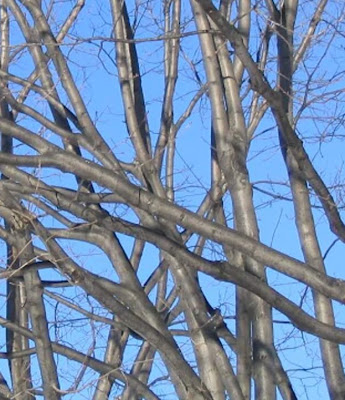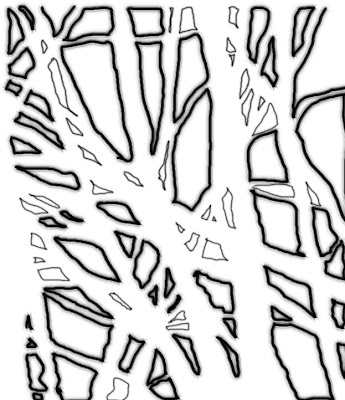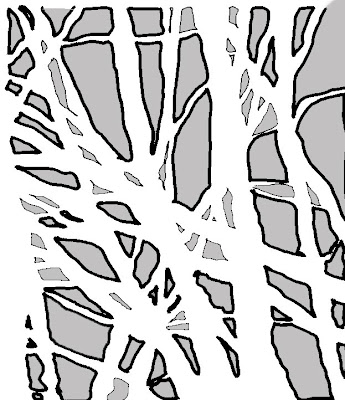 Step 1: find a good section of trees that have no leaves so that you can easily see the branches. You can choose to draw the most interesting section of the tree(s) if you'd like. Notice how the image above is cropped so that the branches fill the whole format. I don't want to see the trunks of the trees; just the branches and where they intersect.
Step 1: find a good section of trees that have no leaves so that you can easily see the branches. You can choose to draw the most interesting section of the tree(s) if you'd like. Notice how the image above is cropped so that the branches fill the whole format. I don't want to see the trunks of the trees; just the branches and where they intersect. Step 2: Now that you have found the section of the tree that you'd like to draw in your sketchbook, visualize the negative areas in your mind. Pay close attention to every "open" space between the branches; these are the negative spaces which you will be drawing. I suggest focusing on the medium to large sized branches and ignoring the "twigs".
Step 2: Now that you have found the section of the tree that you'd like to draw in your sketchbook, visualize the negative areas in your mind. Pay close attention to every "open" space between the branches; these are the negative spaces which you will be drawing. I suggest focusing on the medium to large sized branches and ignoring the "twigs".
Step 3: In your sketchbook, begin drawing the negative spaces as they appear in the trees you are drawing. Take your time and make sure that every negative space that you draw is accurate in shape and size to the real thing. You should have something similar to the example above. Notice that you will begin to "draw" the tree without really drawing the tree.
 Step 4: After you have drawn all the major negative spaces and filled your sketchbook paper, you may choose to go back into your drawing and shade the negative areas. This will add contrast and further separate the trees from the background which you drew. Good luck - Mr. Kelley
Step 4: After you have drawn all the major negative spaces and filled your sketchbook paper, you may choose to go back into your drawing and shade the negative areas. This will add contrast and further separate the trees from the background which you drew. Good luck - Mr. KelleyART 3 - We are starting our still life drawings on Wednesday. You are to bring one object to class from your home which represents your personality. It must be small enough to carry to school and large enough to be easily seen in the still life setup which I will have in class.






